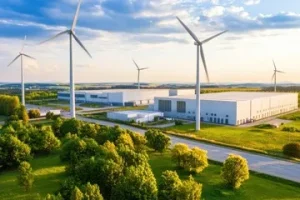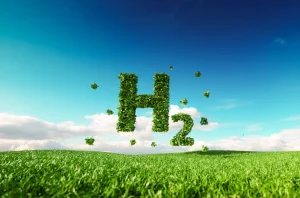Which Hydrogen Production Method is Best for the Future?-
In the global push to decarbonise energy systems, hydrogen has emerged as a leading contender—a clean, versatile fuel that could power everything from industrial furnaces to long-haul trucks and even your city’s electric grid. But there’s a catch: not all hydrogen is created equal.
The method used to produce hydrogen plays a massive role in its environmental impact, cost, and scalability. Whether you’re designing a green hydrogen plant or evaluating long-term investments in hydrogen production technology, the question is the same:
Which hydrogen production method will truly fuel the future?
Let’s break down the leading contenders—from fossil-based to clean electrolysis—and explore where the world is heading.
- Grey Hydroge: Affordable, But Carbon-Heavy
Steam Methane Reforming (SMR) is the most widely used hydrogen production method today. It involves reacting natural gas with high-temperature steam to produce hydrogen—and unfortunately, CO₂ as a by-product.
- Pros:
- Established technology
- Relatively low production cost
- Cons:
- Emits large amounts of CO₂
- Relies on fossil fuels
Grey hydrogen accounts for over 90% of global hydrogen output today. But with climate goals tightening, it’s clear this method can’t lead us into a clean future without major upgrades.
2. Blue Hydrogen: A Cleaner, Transitional Option
Blue hydrogen uses the same SMR process, but adds carbon capture and storage (CCS) to trap CO₂ before it reaches the atmosphere.
- Pros:
- Lower emissions than grey hydrogen
- Compatible with existing natural gas infrastructure
- Cons:
- CCS is still expensive and energy-intensive
- Not truly renewable or carbon-neutral
Many energy giants see blue hydrogen as a bridge—an interim step until fully renewable hydrogen production becomes viable at scale.
- Green Hydrogen: Splitting Water, Not the Planet
Now comes the showstopper: green hydrogen, produced by splitting water into hydrogen and oxygen using renewable electricity. This is done using advanced hydrogen electrolysers—the key tech behind every green hydrogen plant.
- Pros:
- Zero carbon emissions when powered by wind, solar, or hydro
- Sustainable and scalable
- Cons:
- Currently more expensive per kg
- Requires large amounts of renewable power
But here’s the exciting part: costs are dropping fast. According to the IEA, green hydrogen could reach cost parity with grey hydrogen by 2030 in high-renewable markets.
“If the 20th century ran on oil, the 21st will run on clean molecules like green hydrogen.”
4. Emerging Tech: Biomass, Photocatalysis & Nuclear Synergy
There are other methods too—some experimental, some quietly gaining ground.
Biomass gasification: Converts organic matter into hydrogen using heat and pressure.
- Photoelectrochemical water splitting:Uses sunlight directly to split water—still in early R&D stages.
- High-temperature electrolysis using nuclear energy:Promising where nuclear + hydrogen make economic sense, like in France or Japan.
These are worth watching, but they’re not ready for prime time just yet.
- Hydrogen Electrolysers: The Core of Clean Production
Regardless of the method, hydrogen electrolysersare central to the green hydrogen revolution. Let’s talk about the main types:
- PEM Electrolysers (Proton Exchange Membrane):
- Ideal for renewable pairing
- Fast ramp-up, compact design
- Alkaline Electrolysers:
- Cost-effective and mature
- Perfect for large-scale steady-state production
- SOEC (Solid Oxide Electrolyser Cells):
- High efficiency when heat is available
- Suited for industrial co-location
Choosing the right electrolyser depends on your power source, location, and scale—but there’s no doubt that investing in high-performance electrolyser technology is crucial for future-ready hydrogen production.
Final Thought
The verdict is clear: Green hydrogen is the future. While grey and blue may still have a place during the transition, it’s the renewable, scalable, and sustainable model of water electrolysis that will define the hydrogen economy for decades to come.
And that’s where YonderH2 steps in.
At YonderH2, we’re powering the shift with state-of-the-art hydrogen electrolysers, smart modular green hydrogen plant designs, and precision power systems built for scale. Whether you’re building a regional plant, integrating renewables, or piloting industrial decarbonisation—we’re your partner in every molecule of progress.
Let’s Build the Future of Hydrogen—Together
The world is ready for clean energy. Are you?
Connect with YonderH2 and explore scalable, efficient, and innovative hydrogen solutions tailored to your business needs.
Let’s engineer your leap into the hydrogen-powered future—smart, clean, and unstoppable.





